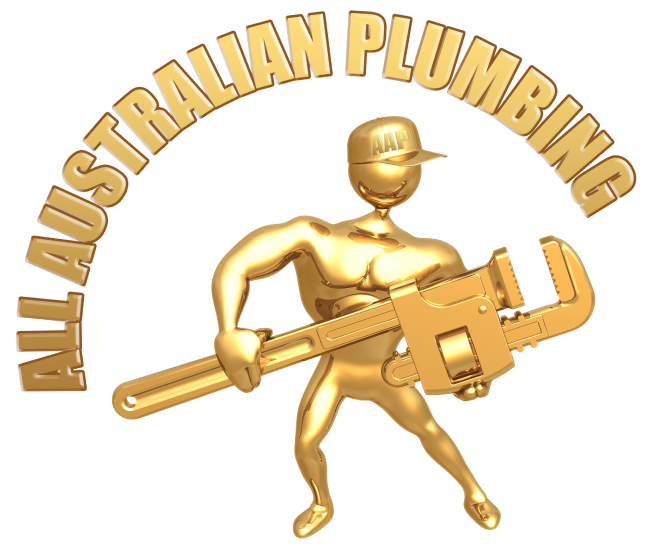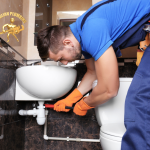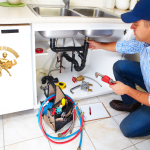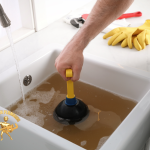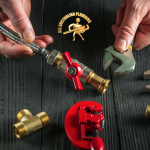Renovating older bathrooms is not just about improving aesthetics; it’s also crucial for enhancing functionality, safety, and efficiency. Over time, bathrooms can suffer from wear and tear, outdated plumbing, and inefficient fixtures. A well-executed renovation can address these issues, transforming an aging bathroom into a modern, comfortable space that meets today’s standards.
Assessing the Current Condition of Your Bathroom
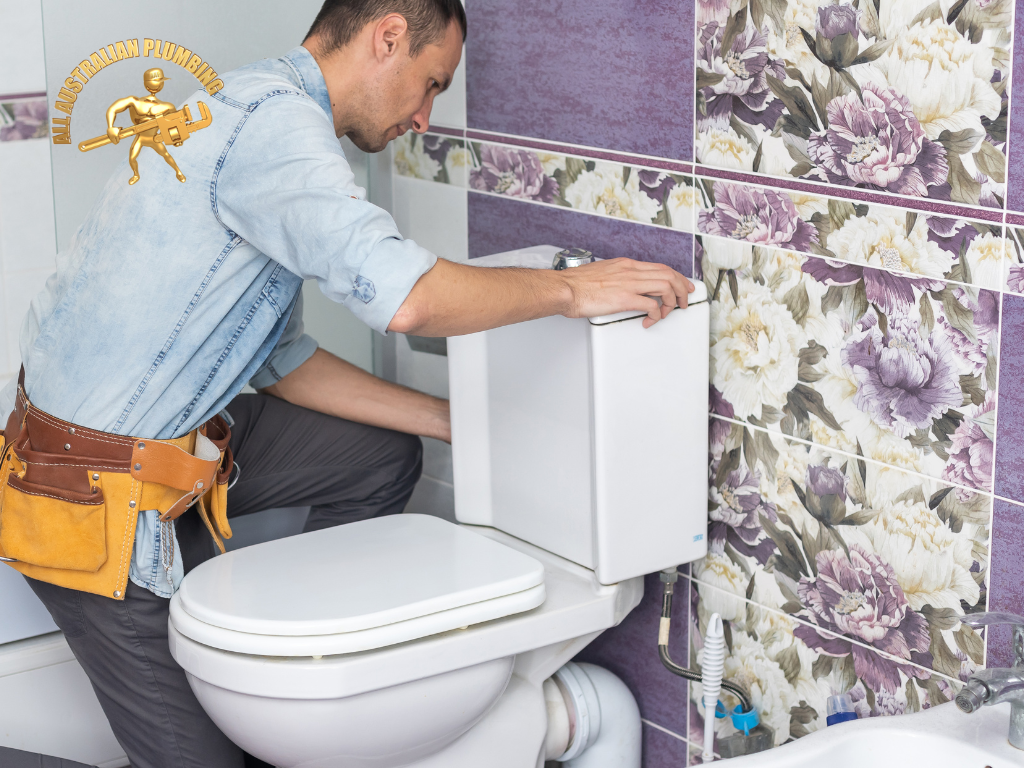
Conducting a Thorough Inspection
Before starting any bathroom renovations, it’s important to conduct a thorough inspection of the space. This helps identify any underlying issues that need to be addressed during the renovation process.
- Identifying Structural Issues: Look for signs of structural damage, such as cracks in the walls or flooring, which may indicate deeper problems. It’s also important to check for uneven surfaces that might need leveling before new installations.
- Checking for Water Damage and Mold: Water damage and mold are common in older bathrooms due to prolonged exposure to moisture. Inspect areas around the bathtub, shower, sink, and toilet for any signs of mold or water stains. If you detect a musty smell or see black spots, it’s crucial to address these issues before proceeding with the renovation.
Evaluating Plumbing and Electrical Systems
An older bathroom is likely to have outdated plumbing and electrical systems that may not comply with current standards. Assessing these systems is key to a successful renovation.
- Importance of Inspecting Old Plumbing: Old pipes are prone to leaks, corrosion, and blockages, which can lead to significant water damage. A professional plumber can evaluate the condition of your plumbing system and recommend necessary upgrades, such as replacing old pipes with more durable materials.
- Upgrading Electrical Outlets and Lighting: Electrical systems in older bathrooms may not support modern lighting and appliances. Upgrading the electrical system is essential for safety and functionality. Consider installing GFCI outlets, which are designed to prevent electrical shocks in areas exposed to moisture.
Upgrading Plumbing Systems in Older Bathrooms
Why Old Plumbing Systems Need Replacement
One of the most critical aspects of bathroom renovations in older homes is addressing the plumbing system. Over time, pipes can deteriorate, leading to leaks, low water pressure, and even water contamination.
- Common Issues with Aging Pipes: Older pipes made from materials like galvanized steel are prone to rust and corrosion, which can cause water flow restrictions and leaks. In some cases, these pipes can also contaminate your water supply with rust particles or lead.
- Benefits of Installing New Plumbing: Replacing old pipes with modern materials such as copper or PEX can improve water pressure, prevent leaks, and ensure clean water delivery. Upgraded plumbing systems are also more durable and less likely to require frequent repairs, making them a wise investment in the long run.
Hiring a Professional Plumber for the Job
Given the complexities involved in upgrading plumbing systems, hiring a professional plumber is essential.
- What to Look for in a Reliable Plumbing Service: Choose a plumbing service with experience in handling older homes. Look for professionals who are licensed, insured, and have positive reviews from past clients. It’s also important to find a plumber who is knowledgeable about the specific challenges that older bathrooms present.
- The Importance of Getting an Accurate Quote: Before committing to any work, request a detailed quote that outlines all the costs associated with the plumbing upgrade. This should include labor, materials, and any potential extra charges. An accurate quote helps you budget effectively and ensures there are no surprises once the work begins.
Ensuring Proper Ventilation and Moisture Control
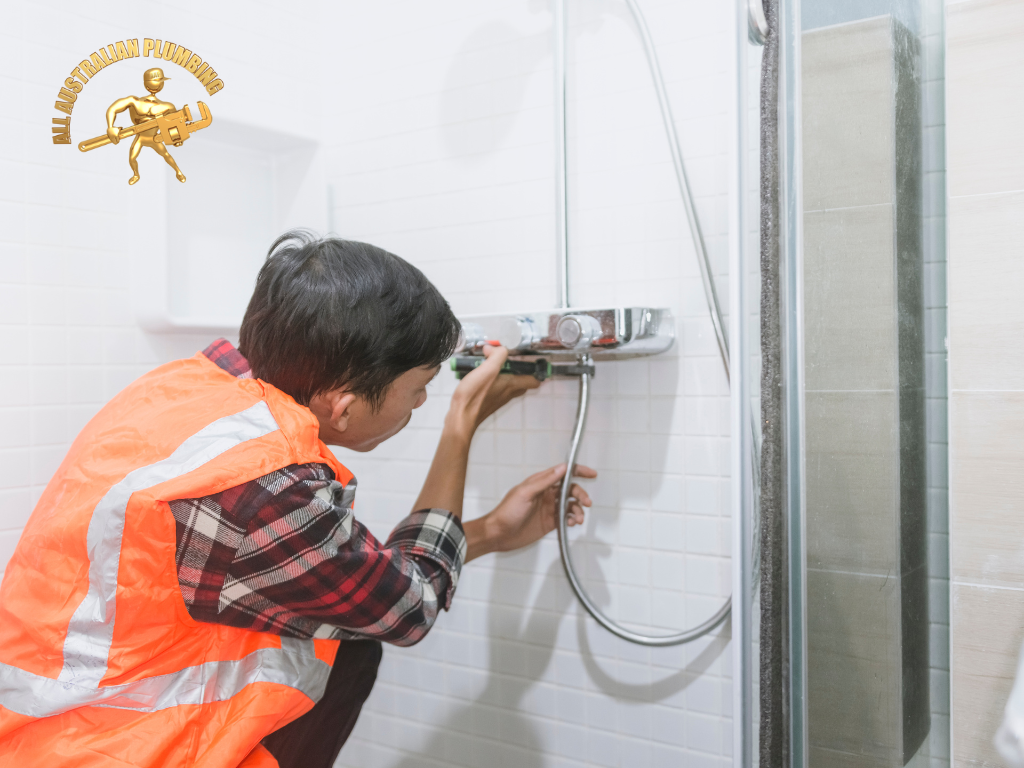
The Role of Ventilation in Preventing Mold
Proper ventilation is a key factor in preventing mold and mildew, which are common problems in older bathrooms. Without adequate ventilation, moisture can accumulate on surfaces, creating the perfect environment for mold growth.
- Best Ventilation Options for Bathrooms: To combat moisture, consider installing an exhaust fan that is powerful enough to ventilate the entire bathroom. Ensure that the fan is vented to the outside, not just into the attic, to effectively remove humid air from the bathroom.
- Signs of Poor Ventilation to Watch For: Foggy mirrors, peeling paint, and persistent dampness are all indicators of inadequate ventilation. If you notice these signs, it’s crucial to upgrade your ventilation system as part of the renovation.
Moisture-Resistant Materials to Consider
In addition to improving ventilation, using moisture-resistant materials can further protect your bathroom from mold and water damage.
- Selecting Waterproof Flooring and Walls: Choose materials like ceramic or porcelain tiles for flooring, as they are water-resistant and easy to clean. For walls, consider using moisture-resistant drywall or cement board, which can withstand exposure to moisture without deteriorating.
- Using Mold-Resistant Paints and Sealants: When painting your bathroom, opt for mold-resistant paints that contain antimicrobial agents to prevent mold growth. Additionally, use high-quality sealants around bathtubs, showers, and sinks to create a waterproof barrier that keeps moisture out.
Updating Fixtures and Fittings
Choosing Modern, Water-Efficient Fixtures
When renovating an older bathroom, one of the most impactful changes you can make is updating the fixtures and fittings. Modern fixtures not only improve the functionality and appearance of your bathroom but also offer significant water-saving benefits.
- Benefits of Low-Flow Toilets and Showerheads: Installing low-flow toilets and showerheads is a smart choice for both environmental and financial reasons. These fixtures are designed to use less water without sacrificing performance, which can lead to substantial savings on your water bills. Additionally, they help reduce your household’s overall water consumption, making them an eco-friendly option.
- Eco-Friendly Faucet Options: Consider upgrading to eco-friendly faucets that are designed to reduce water flow while maintaining strong water pressure. These faucets often come with features like aerators, which mix air with water to create a more efficient flow, further conserving water.
Installing Durable and Stylish Fittings
Beyond efficiency, the durability and style of your fixtures are key considerations in a bathroom renovation. You want fittings that not only look great but also stand the test of time.
- How to Select Long-Lasting Materials: When choosing fittings, opt for materials known for their durability, such as brass or stainless steel. These materials resist corrosion and wear, ensuring your fixtures remain functional and attractive for years. Additionally, consider finishes like chrome or brushed nickel, which are both stylish and easy to maintain.
- Matching Fittings with Your Bathroom’s Style: Ensure that your new fixtures complement the overall design of your bathroom. Whether you’re aiming for a modern, minimalist look or a more traditional aesthetic, there are fittings available to suit every style. Consider the shape, finish, and size of each fitting to ensure a cohesive look throughout the space.
Addressing Toilet Repairs During Renovation
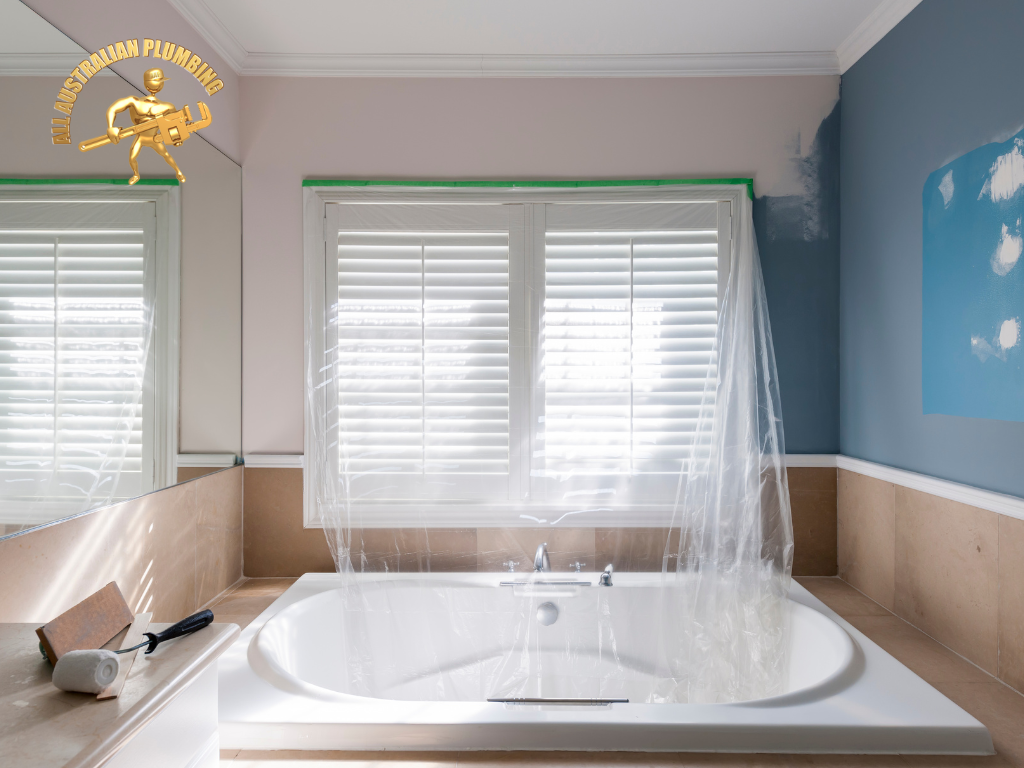
Common Toilet Issues in Older Bathrooms
Toilets in older bathrooms often suffer from a range of issues due to wear and tear, outdated technology, and neglect. Addressing these issues during a renovation is crucial to ensure the long-term functionality of your bathroom.
- Leaky Toilets and Water Damage: One of the most common problems in older bathrooms is a leaky toilet, which can cause significant water damage if left unchecked. Leaks can occur around the base, within the tank, or from worn-out seals and gaskets. If you notice pooling water or hear the toilet repairs running constantly, it’s time to address the issue.
- Low Water Pressure Problems: Older toilets may also suffer from low water pressure, making them less effective and increasing the likelihood of clogs. This problem is often due to outdated plumbing or a build-up of mineral deposits in the pipes. A professional plumber can diagnose the issue and recommend solutions, such as replacing pipes or installing a new, more efficient toilet.
When to Replace vs. Repair Your Toilet
Deciding whether to repair or replace your toilet can depend on several factors, including the extent of the damage, the age of the toilet, and your budget.
- Cost-Effectiveness of Repairs vs. Replacement: In some cases, simple repairs like replacing a flapper valve or tightening loose bolts can resolve toilet issues. However, if your toilet is old and prone to frequent problems, it may be more cost-effective in the long run to replace it entirely. Modern toilets are more efficient and can save you money on water bills.
- Hiring a Professional Plumber for Toilet Repairs: Whether you decide to repair or replace your toilet, it’s important to hire a professional plumber to ensure the job is done correctly. A professional will have the expertise to identify underlying issues and prevent future problems, saving you time, money, and hassle in the long term.
Preserving the Character of Historic Bathrooms
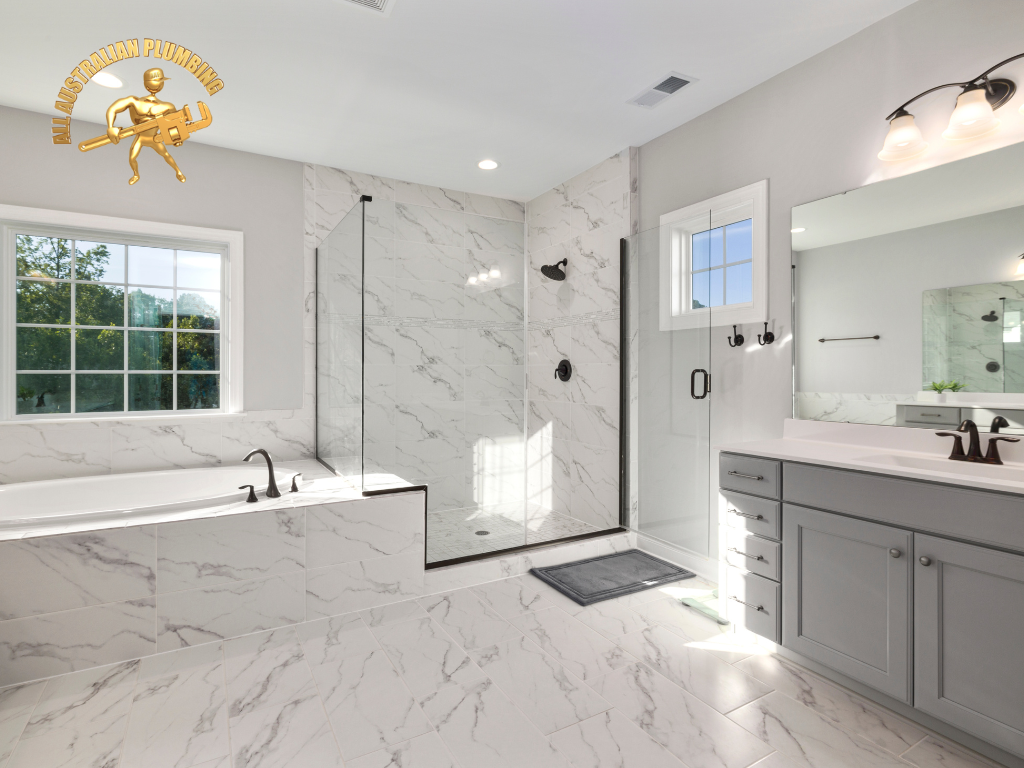
Balancing Modern Upgrades with Historic Elements
Renovating a historic bathroom requires a delicate balance between preserving the original character and incorporating modern conveniences. The goal is to create a space that meets contemporary standards while respecting the bathroom’s historical integrity.
- How to Retain Original Features: Identify key features that contribute to the bathroom’s historic charm, such as original tiles, vintage fixtures, or unique architectural details. Whenever possible, preserve these elements by carefully restoring them. For example, original tiles can often be cleaned and regrouted rather than replaced, maintaining the room’s authentic feel.
- Modernizing Without Losing Charm: While it’s important to preserve original features, it’s equally important to ensure the bathroom is functional and comfortable by today’s standards. Consider adding modern amenities like improved lighting, updated plumbing, and efficient fixtures that blend seamlessly with the existing design. For example, you might choose a new faucet with a vintage look that complements the original sink.
Sourcing Period-Appropriate Fixtures
When modernizing a historic bathroom, finding fixtures that match the period style can help maintain the bathroom’s authentic look.
- Where to Find Vintage-Style Fixtures: Many suppliers specialize in reproductions of vintage fixtures, allowing you to update your bathroom with pieces that look like they belong to the original design. These reproductions offer the benefit of modern functionality while preserving the aesthetic of the period.
- Customizing New Fixtures to Match the Era: If you can’t find the perfect match, consider customizing modern fixtures to suit the style of your historic bathroom renovations. For example, a modern bathtub can be paired with antique-style faucets, or a new vanity can be designed to mimic the look of a vintage piece.
